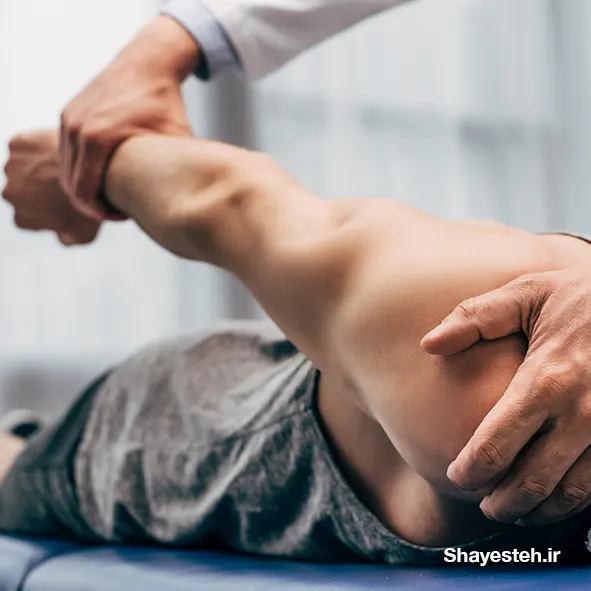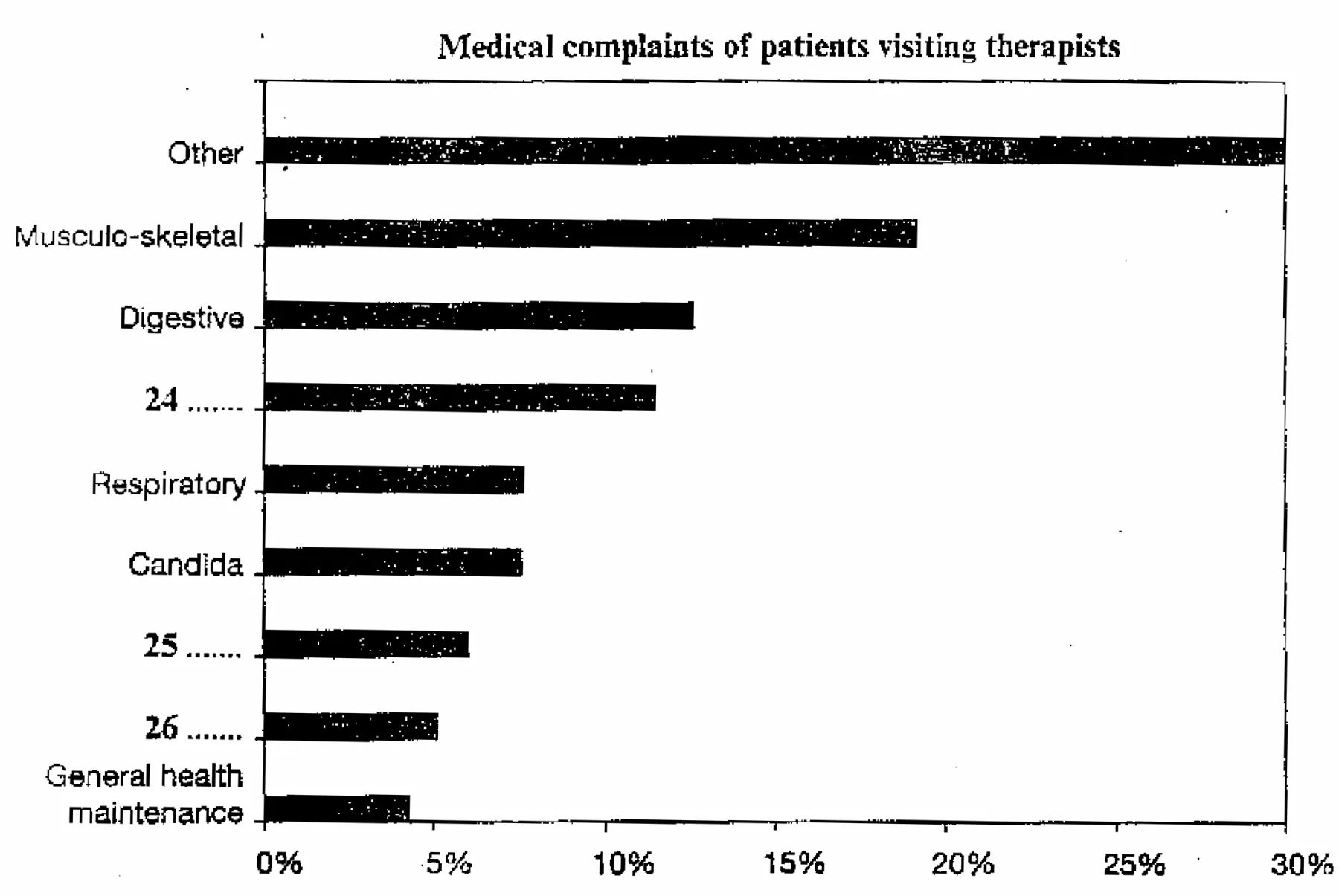در صورتی که اشکالی در ترجمه می بینید می توانید از طریق شماره زیر در واتساپ نظرات خود را برای ما بفرستید
09331464034Alternative Medicine in Australia
طب جایگزین در استرالیا

The first students to study <strong>alternative</strong> medicine at university level in Australia began their four-year, full-time course at the University of Technology, Sydney, in early 1994.
اولین دانشجویانی که دوره های طب <strong>جایگزین</strong> را در سطح دانشگاهی در استرالیا می گذرانند، دوره چهار ساله تمام وقت خود را در دانشگاه فناوری، در سیدنی، از اوایل سال 1994 آغاز کردند.
Their course <strong>covered</strong>, among other therapies, acupuncture.
دوره آنها، علاوه بر سایر روش های درمانی، طب سوزنی را نیز <strong>شامل</strong> می شود.
The theory they learnt is based on the <strong>traditional</strong> Chinese explanation of this ancient healing art: that it can regulate the flow of ‘Qi’ or energy through pathways in the body.
نظریه ای که آنها آموختند مبتنی بر توضیح <strong>سنتی</strong> چینی در مورد این هنر شفابخشی باستانی است: اینکه می تواند جریان 'Qi' یا انرژی را از طریق مسیرهای بدن تنظیم کند.
This course reflects how far some alternative <strong>therapies</strong> have come in their struggle for acceptance by the medical establishment.
این دوره نشان می دهد که برخی از روش های <strong>درمانی</strong> جایگزین در تلاش برای پذیرش توسط موسسه پزشکی تا چه حد پیش رفته اند.
<strong> </strong>
Australia has been unusual in the Western world in having a very <strong>conservative</strong> attitude to natural or alternative therapies, according to Dr Paul Laver, a lecturer in Public Health at the University of Sydney.
به گفته دکتر پاول لاور، مدرس بهداشت عمومی در دانشگاه سیدنی، استرالیا در جهان غرب برخورد بسیار <strong>محافظه کارانه ای</strong> با درمان های طبیعی یا جایگزین غیر معمول داشته است.
‘We’ve had a tradition of doctors being fairly powerful and I guess they are pretty loath to allow any <strong>pretenders</strong> to their position to come into it.
ما سنتی داشته ایم که در آن پزشکان نسبتا قدرتمند بوده اند و گمان میکنم آنها از ورود <strong>مدعیان</strong> به این عرصه بیزار اند و چنین اجازه ای نمیدهند.
’ In many other <strong>industrialised</strong> countries, orthodox and alternative medicine have worked ‘hand in glove’ for years.
در بسیاری از کشورهای <strong>صنعتی</strong> دیگر، ارتودوکس و طب جایگزین سالهاست "دست در دست" یکدیگر فعالیت می کنند.
In Europe, only orthodox doctors can <strong>prescribe</strong> herbal medicine.
در اروپا، فقط پزشکان ارتدکس می توانند داروهای گیاهی <strong>تجویز</strong> کنند.
In Germany, plant remedies account for 10% of the national <strong>turnover</strong> of pharmaceuticals.
در آلمان، داروهای گیاهی 10٪ از <strong>گردش مالی</strong> ملی داروسازی را تشکیل می دهند.
Americans made more visits to alternative therapists than to orthodox doctors in 1990, and each year they spend about $USi2 billion on therapies that have not been <strong>scientifically</strong> tested.
در سال 1990 آمریكایی ها بیشتر از پزشكان ارتدوكس به پزشکان جایگزین مراجعه كردند و هر ساله حدود 2 میلیارد دلار آمریكا برای درمان هایی كه آزمایش <strong>علمی</strong> نشده اند، هزینه می كنند.
<strong> </strong>
<strong>Disenchantment</strong> with orthodox medicine has seen the popularity of alternative therapies in Australia climb steadily during the past 20 years.
<strong>نارضایتی</strong> از داروهای ارتدوکس، محبوبیت درمان های جایگزین را در استرالیا طی 20 سال گذشته به طور مداوم افزایش داده است.
In a 1983 national health survey, 1,9% of people said they had contacted a chiropractor, naturopath, osteopath, <strong>acupuncturist</strong> or herbalist in the two weeks prior to the survey.
در یک نظرسنجی بهداشت ملی در سال 1983، 1.9٪ از افراد گفتند که در دو هفته قبل از نظرسنجی با متخصص کایروپراکتیک، درمانگر طبیعی، استخوان درمانگر، متخصص <strong>طب سوزنی</strong> یا گیاهان دارویی تماس گرفته اند.
By 1990, this <strong>figure</strong> had risen to 2,6% of the population.
تا سال 1990 ، این <strong>رقم</strong> به 2،6 درصد از جمعیت رسیده بود.
The 550,000 <strong>consultation</strong>s with alternative therapists reported in the 1990 survey represented about an eighth of the total number of consultations with medically qualified personnel covered by the survey, according to Dr Laver and colleagues writing in the Australian Journal of Public Health in 1993.
طبق گفته دکتر لاور و همکارانش در سال 1993 در مجله بهداشت عمومی استرالیا ، 550،000 <strong>مشاوره</strong> با پزشکان جایگزین گزارش شده در نظرسنجی 1990 ، تقریباً یک هشتم از کل مشاوره با پرسنل واجد شرایط پزشکی را شامل می شود.
‘A better educated and less accepting public has become <strong>disillusioned</strong> with the experts in general, and increasingly sceptical about science and empirically based knowledge,’ they said.
آنها گفتند: "یک جامعه با تحصیلات بهتر و پذیرفتگی کمتر، به طور کلی از متخصصان <strong>ناامید</strong> شده، و نسبت به علم و دانش مبتنی بر تجربیات شکاک می شود."
‘The high <strong>standing</strong> of professionals, including doctors, has been eroded as a consequence.
در نتیجه <strong>جایگاه</strong> والای متخصصان، از جمله پزشکان، از بین رفته است.’
Rather than <strong>resisting</strong> or criticising this trend, increasing numbers of Australian doctors, particularly younger ones, are forming group practices with alternative therapists or taking courses themselves, particularly in acupuncture and herbalism.
به جای <strong>مقاومت</strong> یا انتقاد از این روند، تعداد فزاینده ای از پزشکان استرالیایی، به ویژه پزشکان جوان، در حال تشکیل اقدامات گروهی با پزشکان جایگزین یا گذراندن دوره های آموزشی داوطلبانه، به ویژه در طب سوزنی و گیاهان دارویی هستند.
Part of the <strong>incentive</strong> was financial, Dr Laver said.
دکتر لاور گفت، "بخشی از <strong>این انگیزه بخشی،</strong> مالی بود."
‘<strong>The bottom line</strong> is that most general practitioners are business people.
<strong>نکته اصلی</strong> این است که بیشتر پزشکان عمومی، تاجر هستند.
If they see <strong>potential</strong> clientele going elsewhere, they might want to be able to offer a similar service.’
اگر ببینند مشتری <strong>بالقوه</strong> به جای دیگری می رود، ممکن است بخواهند خدمات مشابهی را ارائه دهند.
<strong> </strong>
In 1993, Dr Laver and his colleagues published a <strong>survey</strong> of 289 Sydney people who attended eight alternative therapists’ practices in Sydney.
در سال 1993، دکتر لاور و همکارانش یک <strong>نظر سنجی</strong> از 289 نفر در سیدنی که در هشت شیوه درمانگری جایگزین شرکت کرده بودند، منتشر کردند.
These <strong>practices</strong> offered a wide range of alternative therapies from 25 therapists.
این <strong>روشها</strong> طیف گسترده ای از درمانهای جایگزین را از 25 درمانگر ارائه می دهد.
Those surveyed had experienced chronic illnesses, for which orthodox medicine had been able to provide little <strong>relief</strong>.
افرادی که در این نظرسنجی شرکت کرده بودند بیماری های مزمن را تجربه کرده بودند که پزشکی ارتودوکس قادر به <strong>تسکین</strong> اندکی بود.
They commented that they liked the <strong>holistic</strong> approach of their alternative therapists and the friendly, concerned and detailed attention they had received.
آنها اظهار داشتند که از شیوه <strong>کلی</strong> پزشکان جایگزین و رفتار دوستانه، مراقبت مفصل و میزان نگرانی که از خود نشان دادند، خوششان آمده.
The cold, <strong>impersonal</strong> manner of orthodox doctors featured in the survey.
روش سرد، و <strong>غیرشخصی</strong> پزشکان ارتدکس در این نظرسنجی برجسته شده است.
An increasing <strong>exodus</strong> from their clinics, coupled with this and a number of other relevant surveys carried out in Australia, all pointing to orthodox doctors’ inadequacies, have led mainstream doctors themselves to begin to admit they could learn from the personal style of alternative therapists.
<strong>مهاجرت</strong> فزاینده که از کلینیک های ارتودوکس، به دنبال این نظر سنجی و همچنین تعدادی نظر سنجی مرتبط دیگر که در استرالیا صورت گرفته، همه نشان دهنده بی کفایتی پزشکان ارتودوکس بوده اند، و باعث شده پزشکان دیگر اعتراف کنند که میتوانند از سبک شخصیتی پزشکان جایگزین بیاموزند.
Dr Patrick Store, President of the Royal College of General <strong>Practitioners</strong>, concurs that orthodox doctors could learn a lot about bedside manner and advising patients on preventative health from alternative therapists.
دکتر پاتریک استور، رئیس کالج سلطنتی <strong>پزشکان عمومی</strong>، موافق است که پزشکان ارتودوکس می توانند چیزهای زیادی در مورد برخورد در کنار تخت بیمار و توصیه به بیماران در مورد بهداشت پیشگیرانه از پزشکان جایگزین یاد بگیرند.
<strong> </strong>
<strong>According to</strong> the Australian Journal of Public Health, 18% of patients visiting alternative therapists do so because they suffer from musculoskeletal complaints; 12% suffer from digestive problems, which is only 1% more than those suffering from emotional problems.
<strong>به گفته</strong> مجله بهداشت عمومی استرالیا، 18٪ از بیمارانی که به پزشکان جایگزین مراجعه می کنند به علت این که از درد های ماهیچه ای-اسکلتی رنج می برند، دست به این کار میزنند؛ 12٪ از مشکلات گوارشی رنج می برند، که فقط 1٪ بیشتر است از کسانی که از مشکلات روحی و عاطفی رنج می برند.
Those suffering from <strong>respiratory</strong> complaints represent 7% of their patients, and Candida sufferers represent an equal percentage.
کسانی که از مشکلات <strong>تنفسی</strong> رنج می برند 7٪ از بیمارانشان را تشکیل میدهند، و مبتلایان به بیماری های قارچی نیز درصد مشابهی را تشکیل می دهند.
Headache sufferers and those complaining of general ill health represent 6% and 5% of patients <strong>respectively</strong>, and a further 4% see therapists for general health maintenance.
مبتلایان به سردرد و کسانی که از سلامت عمومی <strong>شکایت دارند</strong> به ترتیب 6٪ و 5٪ بیماران را تشکیل میدهند و 4٪ دیگر برای حفظ سلامت عمومی به درمانگران مراجعه می کنند.
The survey suggested that <strong>complementary</strong> medicine is probably a better term than alternative medicine.
این نظرسنجی نشان می دهد که طب <strong>مکمل</strong> احتمالاً اصطلاح بهتری نسبت به طب جایگزین است.
Alternative medicine appears to be an <strong>adjunct</strong>, sought in times of disenchantment when conventional medicine seems not to offer the answer.
به نظر میرسد طب جایگزین یک درمان <strong>فرعی</strong> است، که بیمار در صورت نا امیدی از پزشکان عمومی و در زمان عدم پاسخ گویی درمانشان به سراغ آن میروند.
Questions & answers
Question 14 and 15
Choose the correct letter, A, B, C or D. Write your answers in boxes 14 and 15 on your answer sheet.
14. Traditionally, how have Australian doctors differed from doctors in many Western countries?
A They have worked closely with pharmaceutical companies.
B They have often worked alongside other therapists.
C They have been reluctant to accept alternative therapists.
D They have regularly prescribed alternative remedies.
15. In 1990, Americans
A were prescribed more herbal medicines than in previous years.
B consulted alternative therapists more often than doctors.
C spent more on natural therapies than orthodox medicines.
D made more complaints about doctors than in previous years.
Questions 16-23
Do the following statements agree with the views of the writer in Reading Passage?
In boxes 16-23 on your answer sheet write
YES if the statement agrees with the views of the writer
NO if the statements contradicts the views of the writer
NOT GIVEN if it is impossible to say what the writer thinks about this
16. Australians have been turning to alternative therapies in increasing numbers over the past 20 years.
17. Between 1983 and 1990 the numbers of patients visiting alternative therapists rose to include a further 8% of the population.
18. The 1990 survey related to 550,000 consultations with alternative therapists.
19. In the past, Australians had a higher opinion of doctors than they do today.
20. Some Australian doctors are retraining in alternative therapies.
21. Alternative therapists earn higher salaries than doctors.
22. The 1993 Sydney survey involved 289 patients who visited alternative therapists for acupuncture treatment.
23. All the patients in the 1993 Sydney survey had long-term medical complaints.
Questions 24 -26
Complete the vertical axis on the table below.
Choose NO MORE THAN THREE WORDS from the Reading Passage for each answer.
Write your answer in boxes 24-26 on your answer sheet.

Answers:
15 B
16 YES
17 NO
18 YES
19 YES
20 YES
21 NOT GIVEN
22 NO
23 YES
24 emotional/emotional problems
25 headache / headaches
26 general ill health
نظرات کاربران
هنوز نظری درج نشده است!